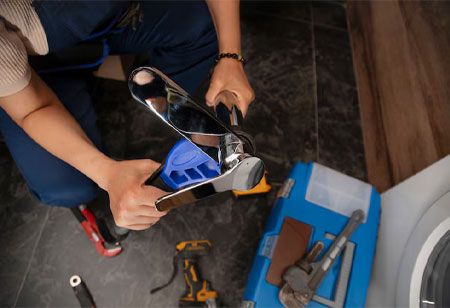
When you're facing plumbing issues, getting the right answers to your questions is crucial. This post dives into those frequently asked queries, providing you with comprehensive insights.
With decades of experience in the field, they've encountered countless unique cases. This provided us the basis to compile a handy resource that can serve as your go-to guide whether you're dealing with leaky pipes or looking for tips on routine maintenance.
Through Dan's Plumbing they aim to help you address your plumbing conundrums with ease. They believe that having the knowledge and understanding of these matters puts you in a better position to handle them.
Keeping your plumbing system clean is key to avoiding clogs and unpleasant odors. It involves understanding how to properly unclog and clean your shower drain.
It's essential to maintain your pipes effectively to prevent clogs. Specifically, gaining access from downstream can be challenging.
When you think of a plumbing emergency, images of water gushing from a broken pipe might come to mind. However, they aren't always evident.
Being able to determine the severity of your plumbing problem before reaching out to professionals is crucial. Here are some helpful pointers for you.
This guide helps understand how to categorize your concerns effectively. Remember, it's never wrong to seek expert advice when in doubt.
Understanding potential emergencies empowers you to handle situations better and protect your property from further damage.
Regularly inspecting your facilities helps detect water leaks, saving resources and preventing damages. Advanced technology has made this task simpler and more efficient.
Enter real-time water monitoring and leak detection systems. They provide consistent oversight, specifically targeted at domestic, irrigation, and cooling tower water meters.
Through these systems, you can now receive immediate alerts for leaks and excessive water use. This feature is incredibly handy during off-hours when your property is unoccupied.
By detecting leaks quickly, you can significantly reduce maintenance costs while also practicing sustainable water usage.
Incorporating these advances into your water management processes assures the longevity of your infrastructure, guarantees savings on utility bills, and promotes environmental responsibility.
If you suspect a leak beneath your slab but see no visible water or dampness, you're not alone. Many homeowners face this cryptic issue.
Slab leaks can be difficult to identify since they occur underneath the concrete of your home. However, hearing water flow with all faucets off is a telltale sign.
No need to panic if you discover a slab leak. With modern technology, solving such issues is possible without massive disruption of your property or lifestyle.
Your prompt attention to potential warning signs is crucial in preventing further damage. Trust your instincts, and when necessary, enlist the expertise of professionals.
Wondering how to unclog your toilet without a plunger? Try using shampoo or dish soap. These can create suction and dissolve the clog effectively.
Should this method fail, consider using a toilet plunger with a flap. It's crucial to use slow, forceful plunges to maintain a good seal and avoid mess.
|
Method |
Items Needed |
Efficiency |
|
Shampoo/Soap |
Dish Soap or Shampoo, Hot water |
Moderate |
|
Toilet Plunger |
Toilet Plunger with flap |
High |
|
Toilet Auger |
Toilet Auger |
Very High |
|
Clothing Hanger Tool |
Metal Coat Hanger |
Low to Moderate |
If both prior methods are unsuccessful, then you might resort to a toilet auger. This powerful tool can break through the stubbornest of clogs effectively.
A word of caution: be careful not to use boiling water as it might crack your toilet. Instead, opt for hot water or specialized drain cleaning products.
Your final fallbacks could be alternative methods such as creating pressure using a trash bag or a makeshift tool like a metal coat hanger. For additional tips, check out this insightful reddit thread.
When a toilet grows old or malfunctions, it can range from a constant annoyance to a severe problem. Replacing it may be the best solution.
Fixing a running toilet often involves inspecting and adjusting aspects of the tank's mechanism. The most common issues usually involve the flapper, flush valve, or fill valve.
You might think that using ice in your sink disposal would clear any grease build-up, but unfortunately, this is not a solution.
If your sink still isn't draining, employing a 25-ft electric drain snake may help. It lets you check for blockages that could be causing the issue.
It's crucial to treat your sink and pipes with care. Understanding what clogs your drains will aid in preventing frequent plumbing issues.
With knowledge and preventive measures, you can maintain an efficient plumbing system, providing a smooth user experience free from unrequired stress in the future.
In conclusion, familiarising yourself with these fundamental plumbing issues can save you time and money. Visit this helpful resource to further deepen your awareness on handling your home's plumbing system effectively.
We use cookies to ensure you get the best experience on our website. Read more...
Copyright © 2025 HomesIndiaMagazine. All Rights Reserved.